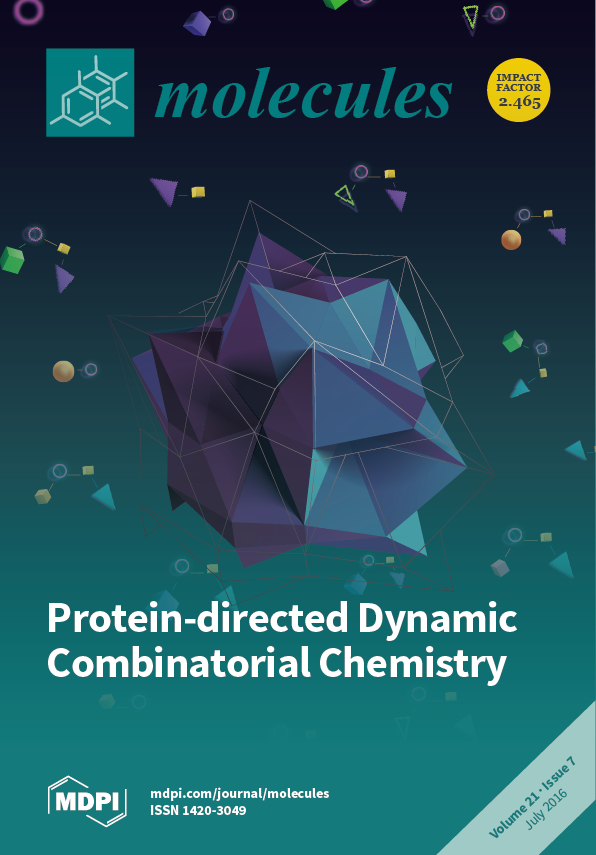Chlorophyll is a pyrrolic pigment with important optical properties, which is the reason it has been studied for many years. Recently, interest has been rising with respect to this molecule because of its outstanding physicochemical properties, particularly applicable to the design and development
[...] Read more.
Chlorophyll is a pyrrolic pigment with important optical properties, which is the reason it has been studied for many years. Recently, interest has been rising with respect to this molecule because of its outstanding physicochemical properties, particularly applicable to the design and development of luminescent materials, hybrid sensor systems, and photodynamic therapy devices for the treatment of cancer cells and bacteria. More recently, our research group has been finding evidence for the possibility of preserving these important properties of substrates containing chlorophyll covalently incorporated within solid pore matrices, such as SiO
2, TiO
2 or ZrO
2 synthesized through the sol-gel process. In this work, we study the optical properties of silica xerogels organo-modified on their surface with
allyl and
phenyl groups and containing different concentrations of chlorophyll bonded to the pore walls, in order to optimize the fluorescence that these macrocyclic species displays in solution. The intention of this investigation was to determine the maximum chlorophyll
a concentration at which this molecule can be trapped inside the pores of a given xerogel and to ascertain if this pigment remains trapped as a monomer, a dimer, or aggregate.
Allyl and
phenyl groups were deposited on the surface of xerogels in view of their important effects on the stability of the molecule, as well as over the fluorescence emission of chlorophyll; however, these organic groups allow the trapping of either chlorophyll
a monomers or dimers. The determination of the above parameters allows finding the most adequate systems for subsequent in vitro or in vivo studies. The characterization of the obtained xerogels was performed through spectroscopic absorption, emission and excitation spectra. These hybrid systems can be employed as mimics of natural systems; the entrapment of chlorophyll inside pore matrices indicates that it is possible to exploit some of the most physicochemical properties of trapped chlorophyll for diverse technological applications. The data herein collected suggest the possibility of applying the developed methodology to other active, captive molecules in order to synthesize new hybrid materials with optimized properties, suitable to be applied in diverse technological fields.
Full article






